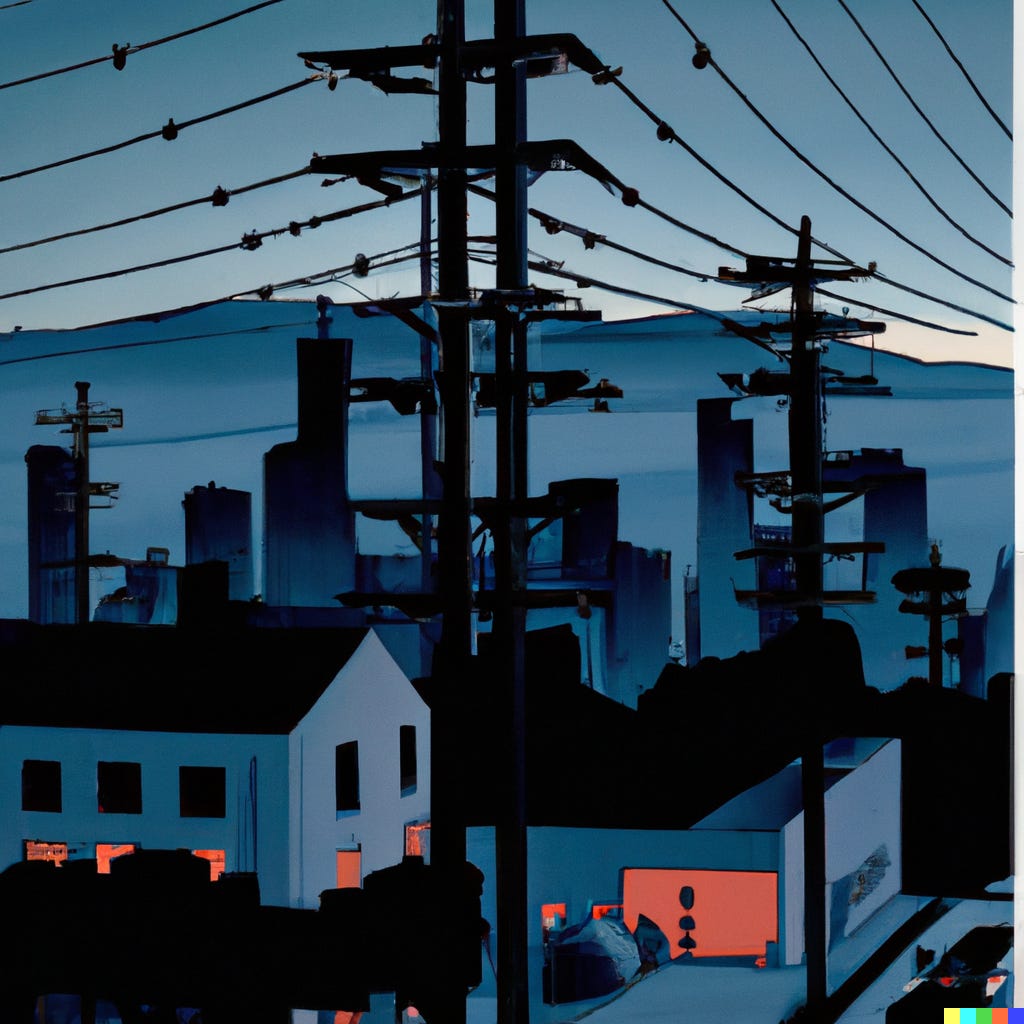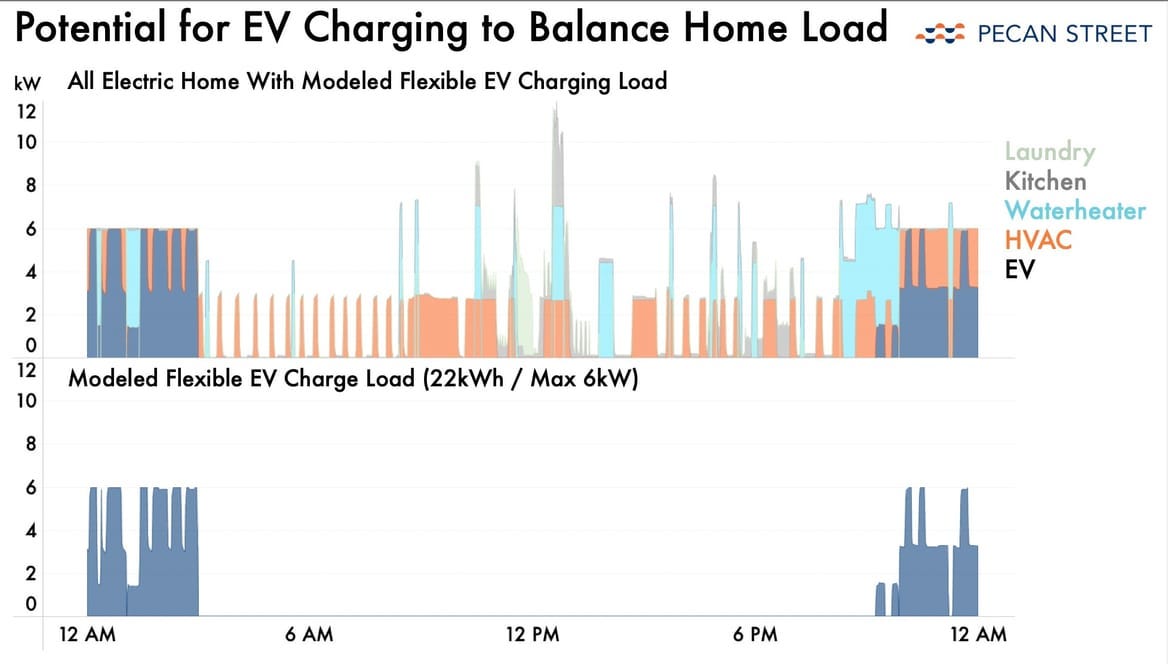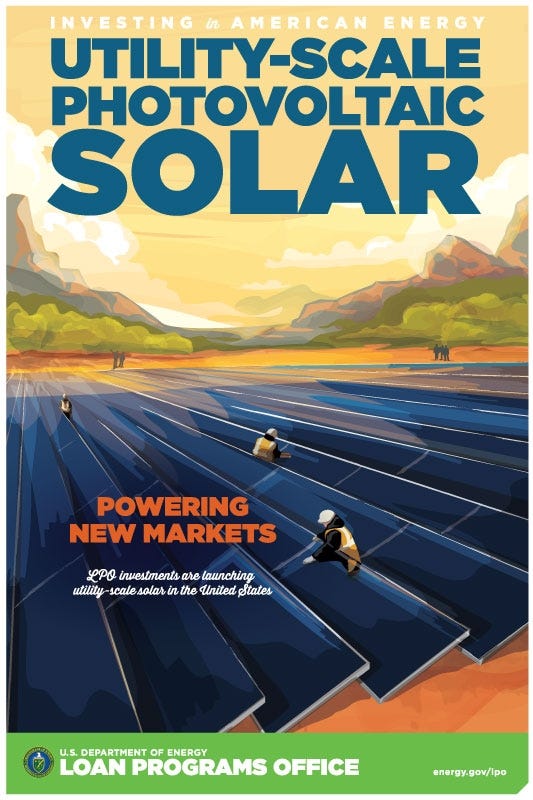What happens to the power grid when demand peaks
An aging grid is already struggling to cope with just the kind of peak usage that will become more common in the future

I’ve been having fun reading The Grid (quotes below), an eye-opening account of how the energy grid in the US evolved into the one we have today and the seemingly insurmountable challenges it will be put through in the transition to clean energy.
Simply put, the grid was built to have its power supplied by relatively few but very large capacity power plants that can operate in a predictable and stable manner. The grid is old and it will struggle to cope with a more distributed system of several smaller power plants like wind and solar that generate energy intermittently and somewhat unpredictably. That intermittent power will need to be combined with equally distributed sources of base load power, probably a combination of grid-level battery storage, geothermal, and advanced nuclear, none of which are operating at scale yet so that need is currently supplied by natural gas and coal (the latter is on a slow but decisive decline.)
Because the grid has essentially no ability to store electricity, interesting things happen when demand for energy fluctuates throughout the day and the seasons, especially at peak loads.
A key point to get across which is sort of known but not really assimilated (at least it wasn’t by me!) is that the energy you are consuming right now is being produced by some power plant somewhere at this very moment.
[Electricity] is always fresh. So fresh, that less than a minute ago, if you live in wind farm territory, that electricity was a fast-moving gust of air. And if you live in coal country, it was a blast of pulverized coal dust being blown into a […] furnace.
What that means for peak loads is that the grid must be ready to very quickly produce and transport the exact amount of additional power needed to match the increase in demand.
Power plants aren’t always operating at full capacity so the output can be dialed up and down a little. But when a lot of additional power is needed, there can be entire power plants that sit idle for most of the time and are put into action to deal with extreme loads.
The power plants reserved for periods of peak demand also tend to be the oldest and dirtiest plants in the fleet […] But if these plants don’t come online when needed, first brownouts and then blackouts will begin rolling across the landscape, as demand and supply fail to align.
That kind of surge only happens a couple of times per year (and usually for just a few hours), so utilities end up spending a disproportionate amount of money to maintain infrastructure that is mostly sitting there not doing anything.
The utilities need to make sure there is enough fuel sitting around ready to combust […] They need enough trained staff on call and ready to go to fire it up and keep it running, and they need to ensure that it is in good working order despite sitting idle most of the time. This is massively expensive for them, and it is a simple and constant drain on their bottom line.
Those big surges in demand can happen in a prolonged heat wave when all A/C units in a region are switched on, or in a cold spell that makes everyone turn their thermostats all the way up. It doesn’t help that the changing climate in a warming planet is already causing such extreme weather events to happen more frequently and last longer, putting even more pressure on the grids.
Less extreme peaks are daily occurrences and more predictable, but in the future they might become more troublesome. Imagine an entire city arriving home from work and switching on the lights, appliances, and devices all at once. Now imagine that on top of that millions of electric cars begin drawing power from the grid at the same time. Plugging in a car is not the same as just another appliance: if unmanaged, a charging vehicle can draw several times more energy from the grid than all other home energy use at its peak. Despite my infatuation with EVs, it is clear that our infrastructure does not yet support a clean energy future with a full or even majority electric fleet.

I was inspired to write this post after learning this rather amusing fact (The Grid, chapter 6) which illustrates the kind of driver of peak energy use that utilities are dealing with every day.
In the UK where electric kettles are common, they have a problem with something called TV pickup — a surge in demand during the ads of widely watched TV shows as television viewers head to the kitchen to boil up a spot of tea. This is a common enough phenomenon that England’s utility often has three or four of these 400-MW surges to deal with every day.
Ultimately we will need the grid to evolve into a modern system that can properly take advantage of clean power and advanced technology: new power plants, higher-capacity transmission lines, grid-level battery storage, rooftop solar, etc.
In the meantime there are solutions that help balance the load on the grid and we will hear a lot more about them going forward:
Demand response allows utilities to take steps to limit electricity use at peak times, like in this past summer in California.
Home battery backups including vehicle-to-home (V2H), as well as vehicle-to-grid (V2G) and other software solutions at the customer end of the equation can help soften the peaks in demand.
Software solutions that use car telematics to enable utilities to manage EV charging. I’ve been watching WeaveGrid as a promising player in this space.

Consume more:
What the National Academy of Sciences wants you to know about energy, especially how astonishingly inefficient coal is: 62% of its energy content is lost at the power plant, and only 2% makes it to your incandescent reading lamp.
See charts showing the impact of the TV pickup effect in the UK during the Euro 2020 competition. The biggest pickup at 1.6GW was “enough to power 888,000 kettles.”
Wikipedia’s account of causes and effects of the Northeast blackout of 2003. The worst blackout in US history was the result of old infrastructure, a software bug, and overgrown trees.



